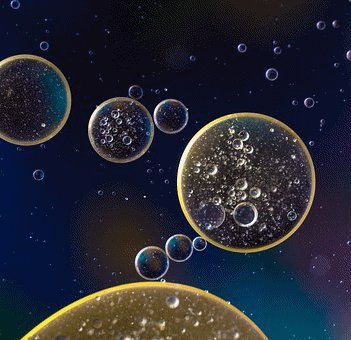
Stem cell
Overview
This article is about the cell type. For the medical therapy, see Stem Cell Treatments
Stem cells are biological cells
found in all multicellular organisms, that can divide
(through mitosis
) and differentiate
into diverse specialized cell types and can self-renew to produce more stem cells. In mammals, there are two broad types of stem cells: embryonic stem cell
s, which are isolated from the inner cell mass
of blastocyst
s, and adult stem cell
s, which are found in various tissues.
Stem cell treatments
Stem cell treatments are a type of intervention strategy that introduces new cells into damaged tissue in order to treat disease or injury. Many medical researchers believe that stem cell treatments have the potential to change the face of human disease and alleviate suffering...
Stem cells are biological cells
Cell (biology)
The cell is the basic structural and functional unit of all known living organisms. It is the smallest unit of life that is classified as a living thing, and is often called the building block of life. The Alberts text discusses how the "cellular building blocks" move to shape developing embryos....
found in all multicellular organisms, that can divide
Cell division
Cell division is the process by which a parent cell divides into two or more daughter cells . Cell division is usually a small segment of a larger cell cycle. This type of cell division in eukaryotes is known as mitosis, and leaves the daughter cell capable of dividing again. The corresponding sort...
(through mitosis
Mitosis
Mitosis is the process by which a eukaryotic cell separates the chromosomes in its cell nucleus into two identical sets, in two separate nuclei. It is generally followed immediately by cytokinesis, which divides the nuclei, cytoplasm, organelles and cell membrane into two cells containing roughly...
) and differentiate
Cellular differentiation
In developmental biology, cellular differentiation is the process by which a less specialized cell becomes a more specialized cell type. Differentiation occurs numerous times during the development of a multicellular organism as the organism changes from a simple zygote to a complex system of...
into diverse specialized cell types and can self-renew to produce more stem cells. In mammals, there are two broad types of stem cells: embryonic stem cell
Embryonic stem cell
Embryonic stem cells are pluripotent stem cells derived from the inner cell mass of the blastocyst, an early-stage embryo. Human embryos reach the blastocyst stage 4–5 days post fertilization, at which time they consist of 50–150 cells...
s, which are isolated from the inner cell mass
Inner cell mass
In early embryogenesis of most eutherian mammals, the inner cell mass is the mass of cells inside the primordial embryo that will eventually give rise to the definitive structures of the fetus...
of blastocyst
Blastocyst
The blastocyst is a structure formed in the early embryogenesis of mammals, after the formation of the morula. It is a specifically mammalian example of a blastula. It possesses an inner cell mass , or embryoblast, which subsequently forms the embryo, and an outer layer of cells, or trophoblast,...
s, and adult stem cell
Adult stem cell
Adult stem cells are undifferentiated cells, found throughout the body after embryonic development, that multiply by cell division to replenish dying cells and regenerate damaged tissues...
s, which are found in various tissues.
Unanswered Questions

